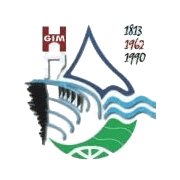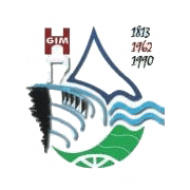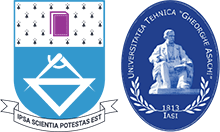Abstract
Geospatial data, both 2D and 3D data play a key role in determining and realizing the infrastructure of an anthropic area. The land topography can be obtained from a Digital Terrain Model and/or the Digital Surface Model. Other types of accurate data are the plans that include objects, such as the topographic-cadastral map of the area. Unmanned Aerial Systems (UAS) allow products to be obtained in a much shorter time, with low costs, without risks to the human factor compared to those obtained on the basis of digital images resulting from performing conventional flights (with pilot) or through traditional techniques. However, the precision of UAS products depends on many factors. This project aims to find the suitable parameters for UAS image acquisition in terms of equipment, sensor integration, flight parameters in order to obtain high accuracy of UAS reconstruction projects. Different UAS equipment, low-cost and high-cost, will be tested in different flight configuration and a new method for measuring topographical details on ground which are not visible on images is proposed. This project is based on recent technologies that, in order bring value to the current workflow in the field of urban photogrammetry and cadastre, need to be evaluated and adequately integrated in an efficient process that can be applied by stakeholders like national agencies, private companies that are involving on a daily basis the geospatial data and infrastructure.
Project team
Project leader: Prof. univ. habil. Ph.D. Eng. Valeria-Ersilia Oniga – “Gheorghe Asachi” Technical University of Iasi
Reasearch team member: Assoc. Prof. Ph.D Eng. Constantin Chirilă – “Gheorghe Asachi” Technical University of Iasi
Reasearch team member: Lecturer Ph.D Eng. Paul Sestraș-Technical University from Cluj-Napoca
Reasearch team member: Lecturer Ph.D Eng. Mihaela Macovei – “Gheorghe Asachi” Technical University of Iasi
Reasearch team member: Ph.D Ana-Ioana Breaban –Technical University of Civil Engineering Bucharest
Year 2022
Stage 1 – Realization of topographical plans for two cadastral sectors located in an urban and rural area respectively, carrying out flights with the „Phantom 4 Pro” UAS system for the rural area and obtaining the products (point clouds, DTM, DSM and orthophotos)
Act. 1.1 – Carrying out topographic measurements for 2 cadastral sectors, located in an urban area, respectively in a rural area, in order to achieve topographic-cadastral plans
Act. 1.2 – Taking flights at 2 different heights, in different image conditions (camera position, flight itinerary etc.) for the cadastral sector located in a rural area, using the Phantom 4 Pro UAS system
Act. 1.3 – UAS oblique images processing using “Reality Capture” dedicated software in different scenarios, using RTK and PPK positioning, GCPs being manually measured on images, or automatically identified using coded targets, for the rural area
Year 2023
Stage 2 – Taking flights at 2 different heights, for two cadastral sectors, located in an urban area, respectively in a rural area, using the Altura system Zenith ATX 8 ((DJI Matrice 300 RTK)) equipped with „Share UAV PSDK 102S” digital camera and LiDAR Ouster sensor respectively, data processing and accuracy assessment
Act 2.1 – Taking flights at 2 different heights, in different image configuration (camera position, flight itinerary, etc.), for the cadastral sector located in urban area using the DJI Phantom 4 Pro UAS system
Act 2.2 –UAS image processing for the rural area, using “Reality Capture” dedicated software, in different scenarios: nadiral images, oblique combined with nadiral, using RTK and PPK positioning respectively, GCPs being manually measured on images, or automatically identified using coded targets
Act 2.3 – Taking flights at 2 different heights, for two cadastral sectors in different image configuration (camera position, flight itinerary, etc.), located in an urban area, respectively in a rural area, using the Altura system Zenith ATX 8 (DJI Matrice 300 RTK)) equipped with „Share UAV PSDK 102S” digital camera
Act 2.4 – Taking flights at 2 different heights, for two cadastral sectors, located in an urban area, respectively in a rural area, using the Altura system Zenith ATX 8 (DJI Matrice 300 RTK)) equipped with LiDAR Ouster sensor, the result being georeferenced point clouds
Act 2.5 – UAS image processing for the urban area, using “Reality Capture” dedicated software, in different scenarios: nadiral images, only oblique images, oblique combined with nadiral, using RTK and PPK positioning respectively, GCPs being manually measured on images, or automatically identified using coded targets
Act 2.6 – Accuracy assessment of UAS point clouds, Digital Terrain Model (DTM), Digital Surface Model (DSM) and orthophotos, by performing a comparative analysis with topographic measurements performed with total station and GNSS technology, in two scenarios: RTK and PPK positioning, respectively
Act 2.7 – Accuracy assessment of LiDAR point clouds, by performing a comparative analysis with topographic measurements performed with total station and GNSS technology, in two scenarios: RTK and PPK positioning, respectively.
Anul 2024
Stage 3 – UAS and LiDAR point clouds integration, using “Reality Capture” software, accuracy assessment of the integrated point clouds, and testing a new method for measuring topographical details on ground, which are not visible on images
Act 3.1 UAS and LiDAR point clouds integration and accuracy assessment of the integrated point clouds.
Act 3.2 – Testing a new method for measuring topographical details on ground, which are not visible on images, using a system that integrates a pole, the Sony A6000 digital camera, the Reach RS2 receiver and a gimball
Stage 2
Stage 3


